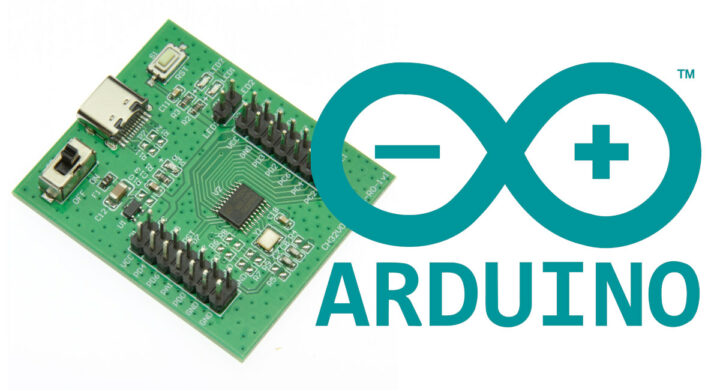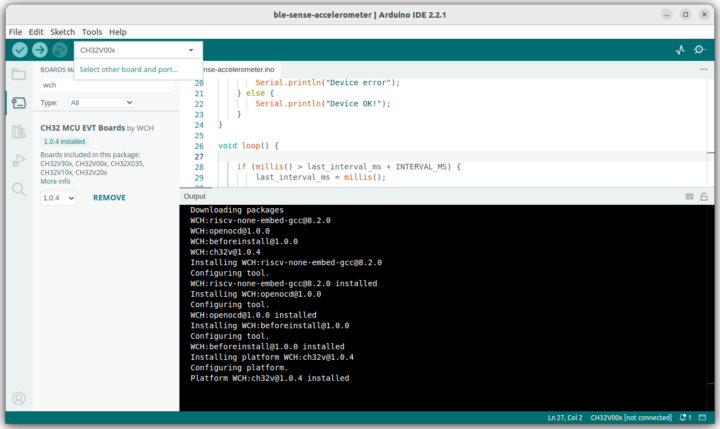WCH has launched some interesting RISC-V microcontrollers in the last year or so, including the “10 cents” CH32V003 RISC-V microcontroller with 2KB SRAM and 16KB flash or the CH32V307with more resources (up to 64KB SRAM and 256KB flash) and additional peripherals.
So far they were programmable in C language using MounRiver IDE or an open-source toolchain, but WCH has now announced Arduino support for many of those RISC-V microcontrollers which should enable more people to get involved.
The core library for CH32duino works with OpenOCD through WCH-LINKE hardware to download the firmware and debug WCH chips and a riscv-none-embed-gcc toolchain that supports custom RISC-V instructions (half-word and byte compression instruction extensions and hardware stack push/pop functions) found in WCH RISC-V microcontroller.
The following evaluation kits are currently supported with ADC, DAC, USART, GPIO, EXTI, SysTick, I2C, and SPI peripherals:
- CH32V003F4P EVT board
- CH32V203G8U EVT board
- CH32X035G8U EVT board
- CH32V103R8T6_BLACK EVT board
- CH32V307VCT6_BLACK EVT board
You’ll need to add the following link to the “Additional Boards Managers URLs” field in the Arduino 2.0 IDE: https://github.com/openwch/board_manager_files/raw/main/package_ch32v_index.json, and install CH32 MCU EVT Boards by WCH, and you’ll then be able to select a RISC-V board such as CH32V00x as shown in the screenshot below.
It works with Windows, Linux, and Mac OS with some OS-specific tweaks. You’ll find documentation and source code on the relevant GitHub repository. Those who prefer watching videos can also check out the getting started video embedded below.

Jean-Luc started CNX Software in 2010 as a part-time endeavor, before quitting his job as a software engineering manager, and starting to write daily news, and reviews full time later in 2011.
Support CNX Software! Donate via cryptocurrencies, become a Patron on Patreon, or purchase goods on Amazon or Aliexpress






